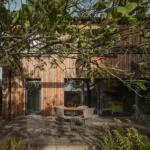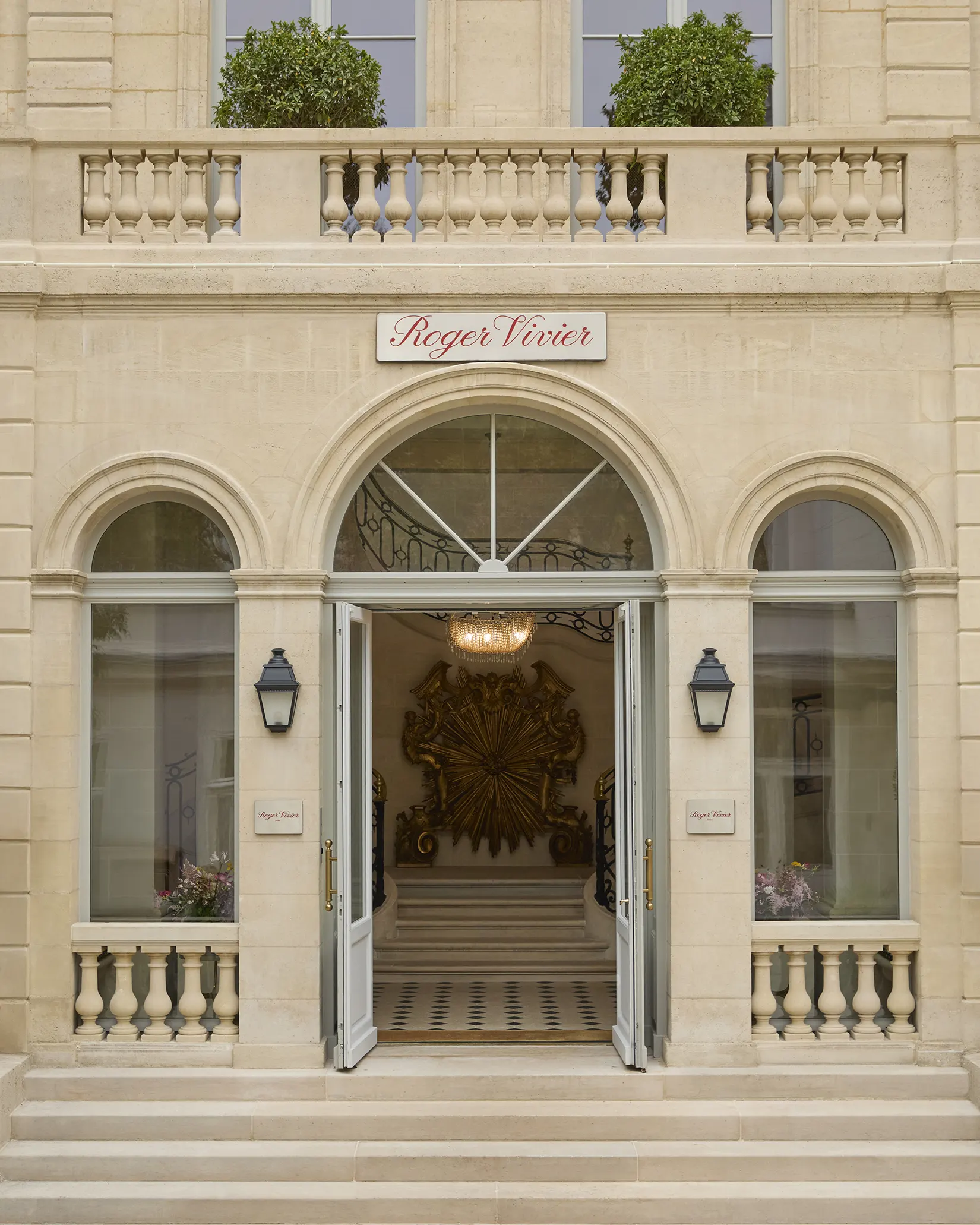
Roger Vivier inaugurates Maison Vivier at 98 Rue de l’Université, in Paris, an architectural landmark in the heart of Saint-Germain-des-Prés, now the new residence of the Maison. Originally constructed in 1729 by royal architect Jacques Gilet de la Fontaine, this hôtel particulier stands as a rare example of 18th-century Parisian architecture. The building’s nearly three-century journey, from its aristocratic origins, through 19th-century bourgeois transformations, to state ownership and modernization under François Avignon, has culminated in a meticulous restoration that preserves its architectural heritage while adapting it for contemporary creative use.
The restoration process has honored the original vision of de la Fontaine, retaining signature elements such as the grand staircase, whose gilded balustrades and abundant natural light serve as a dramatic prelude to the spaces beyond. The staircase not only connects the building’s floors but acts as a transition from the building’s storied past to its vibrant present. The restoration team employed traditional techniques and materials to preserve the authenticity of the structure, while integrating modern interventions that support the building’s new function as a creative hub for Roger Vivier.
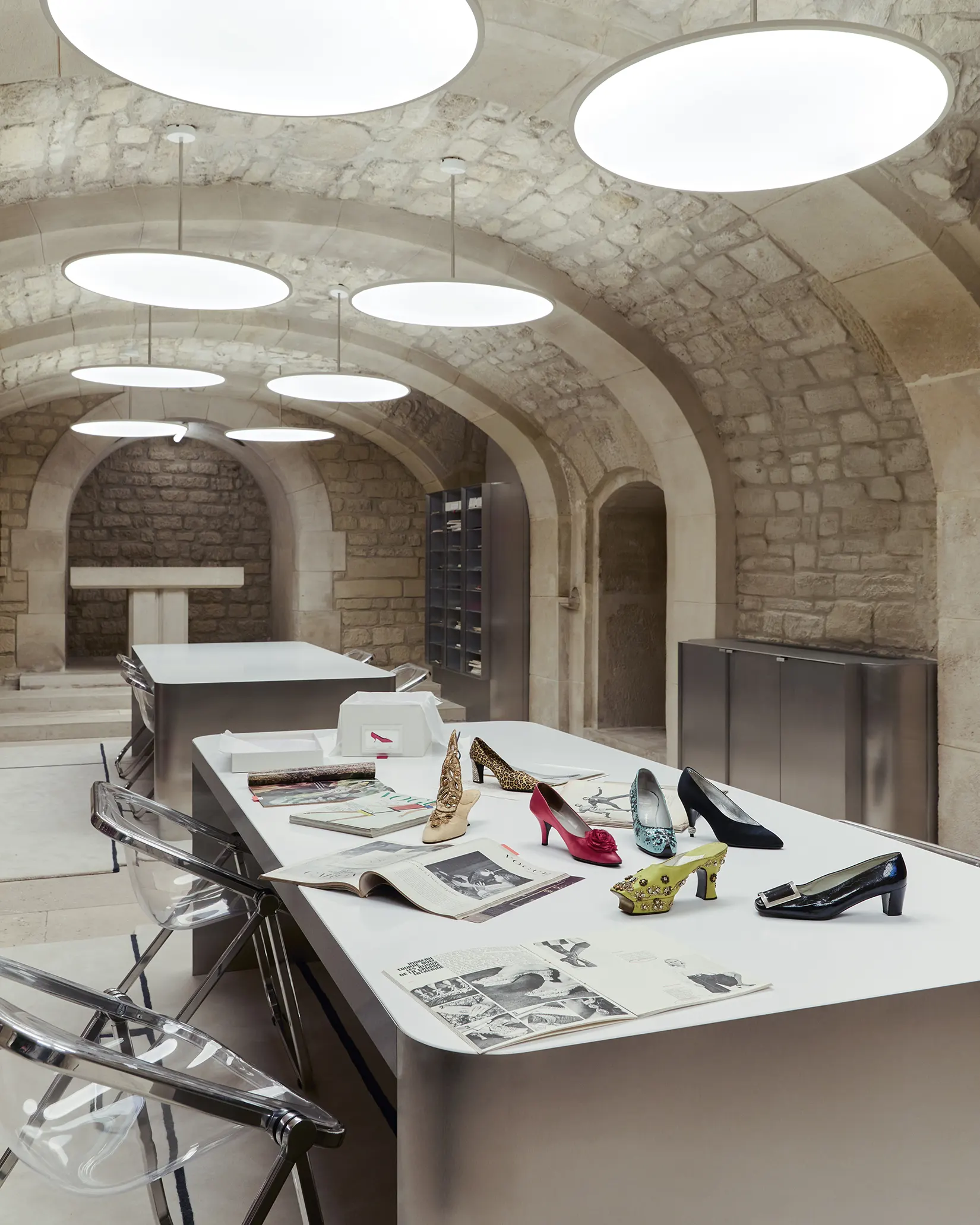
Behind the building, a secluded garden, inspired by classical French landscape architecture, extends the architectural narrative outdoors. The garden’s symmetry and meticulous design echo the building’s original proportions and Parisian elegance, offering a tranquil counterpoint to the urban surroundings.
Inside, the architectural narrative continues through a series of salons, each expressing a different facet of the Maison’s identity while respecting the building’s historic bones. The Salon de l’Héritage, curated by Inès de La Fressange, celebrates the legacy of Vivier’s design within a context of mid-century and contemporary furnishings. The interplay of original architectural details with curated objects, Xavier Feal’s steel shelving, Mies van der Rohe’s Barcelona chairs, Pierre Frey curtains, creates a dialogue between eras, highlighting the adaptability and continued relevance of the hôtel particulier’s spaces.
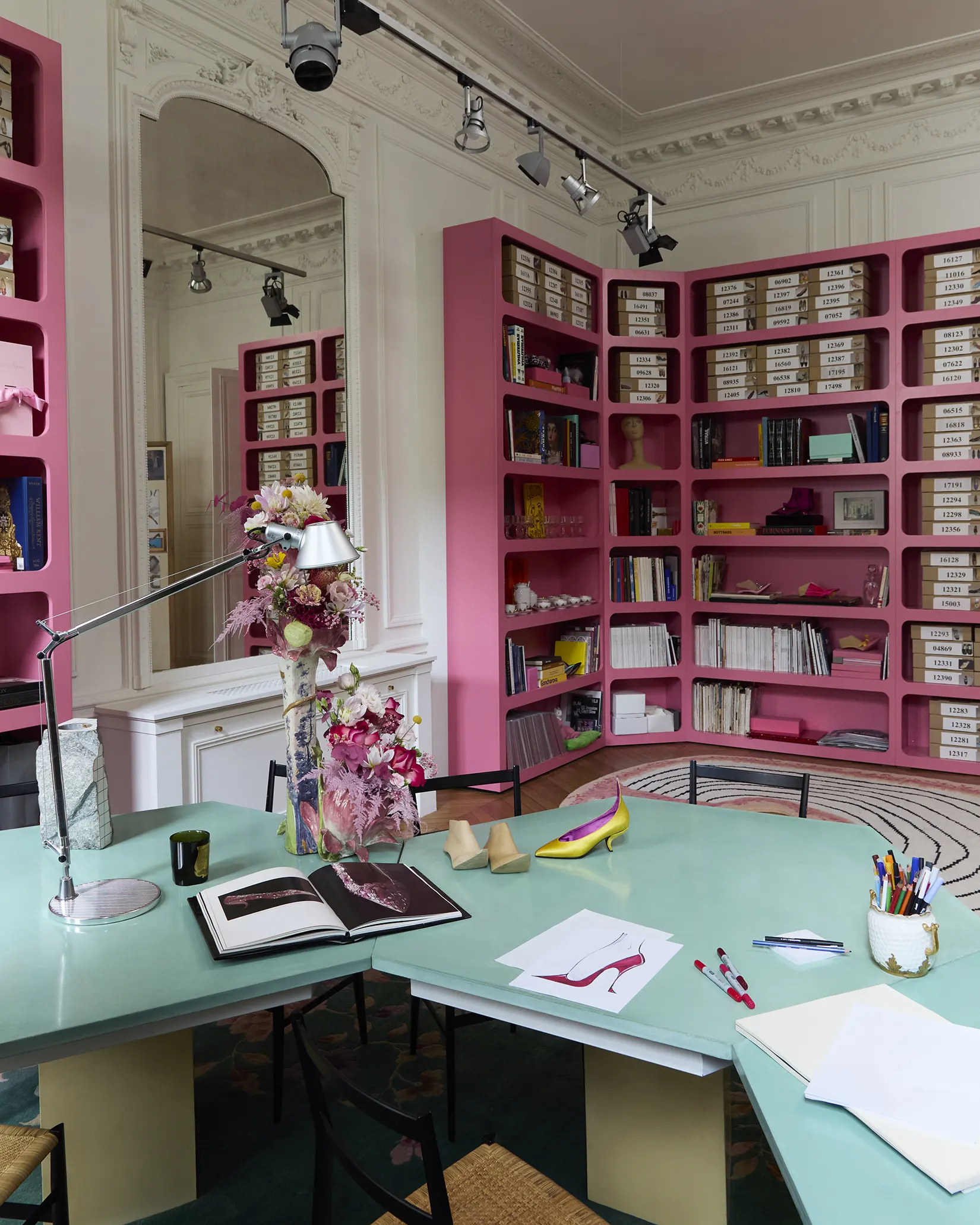
The Salon Vivier, with its blend of Regency and Louis XVI seating, sculptural pieces by Philippe Hiquily and Agnès Debizet, and modernist accents by Marcello Piacentini, reflects the layered history of the building. Artworks and objets d’art, including a Picasso pochoir and a Chinese cabinet from Hubert de Givenchy, reinforce the cosmopolitan spirit that has defined both the Maison and its architectural home.
The Studio de Gherardo Felloni, the creative director’s workspace, is a testament to the building’s ability to accommodate contemporary functions without compromising its historical integrity. The space is defined by its interplay of color, texture, and light, with a sculptural desk by Duccio Maria Gambi and archival shoe boxes lining the shelves. Personal touches and vintage finds coexist with the building’s period features, illustrating the potential for heritage architecture to inspire modern creativity.
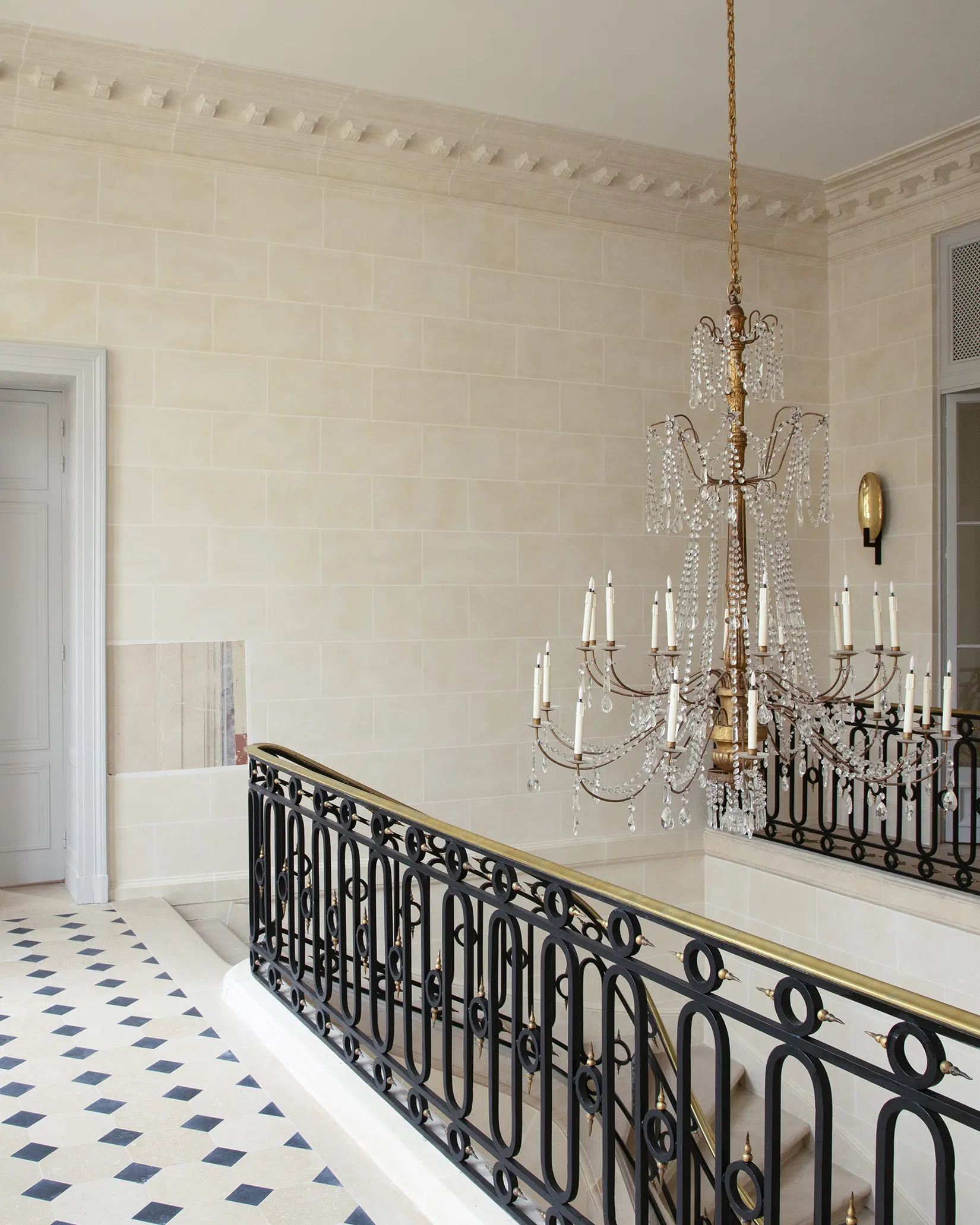
A particular highlight of the renovation is the Salle des Archives, where over 1,000 creations are preserved alongside sketches, photographs, and magazines. The room’s museum-standard preservation methods are integrated seamlessly into the hôtel particulier’s fabric, allowing the space to function as both archive and living atelier. Notable artifacts include a 1962 prototype for Princess Soraya, documentation of Queen Elizabeth II’s Coronation shoes, and the original Belle Vivier created for Yves Saint Laurent’s Mondrian collection.
The unveiling of the Belle Vivier 60 collection within these walls further underscores the dialogue between past and present that defines both the building and the Maison. The collection’s reinterpretation of the iconic shoe in new materials and forms is mirrored by the building’s own transformation: a historic structure reimagined for a new era.
Discover more in our gallery:
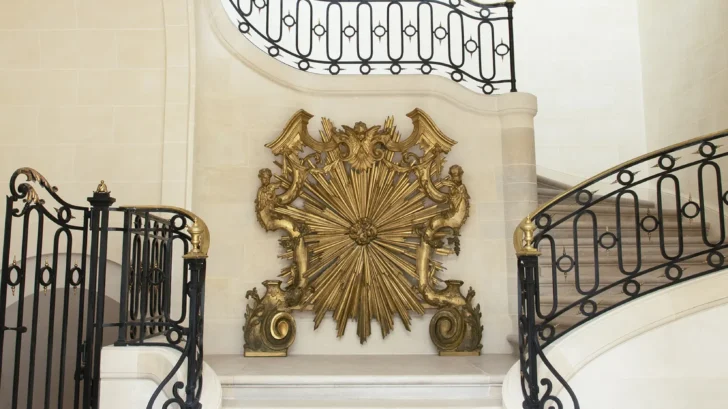
Today, Maison Vivier is an architectural statement and a model for adaptive reuse. The restoration and reimagining of the hôtel particulier by Jacques Gilet de la Fontaine demonstrates how heritage buildings can be thoughtfully adapted to support contemporary creative industries, preserving their historical significance while enabling new narratives to unfold.
For more of the latest Roger Vivier Spring Summer 2026 collection, special view of the maison’s archive and more visit DSCENE magazine’s PFW coverage.


